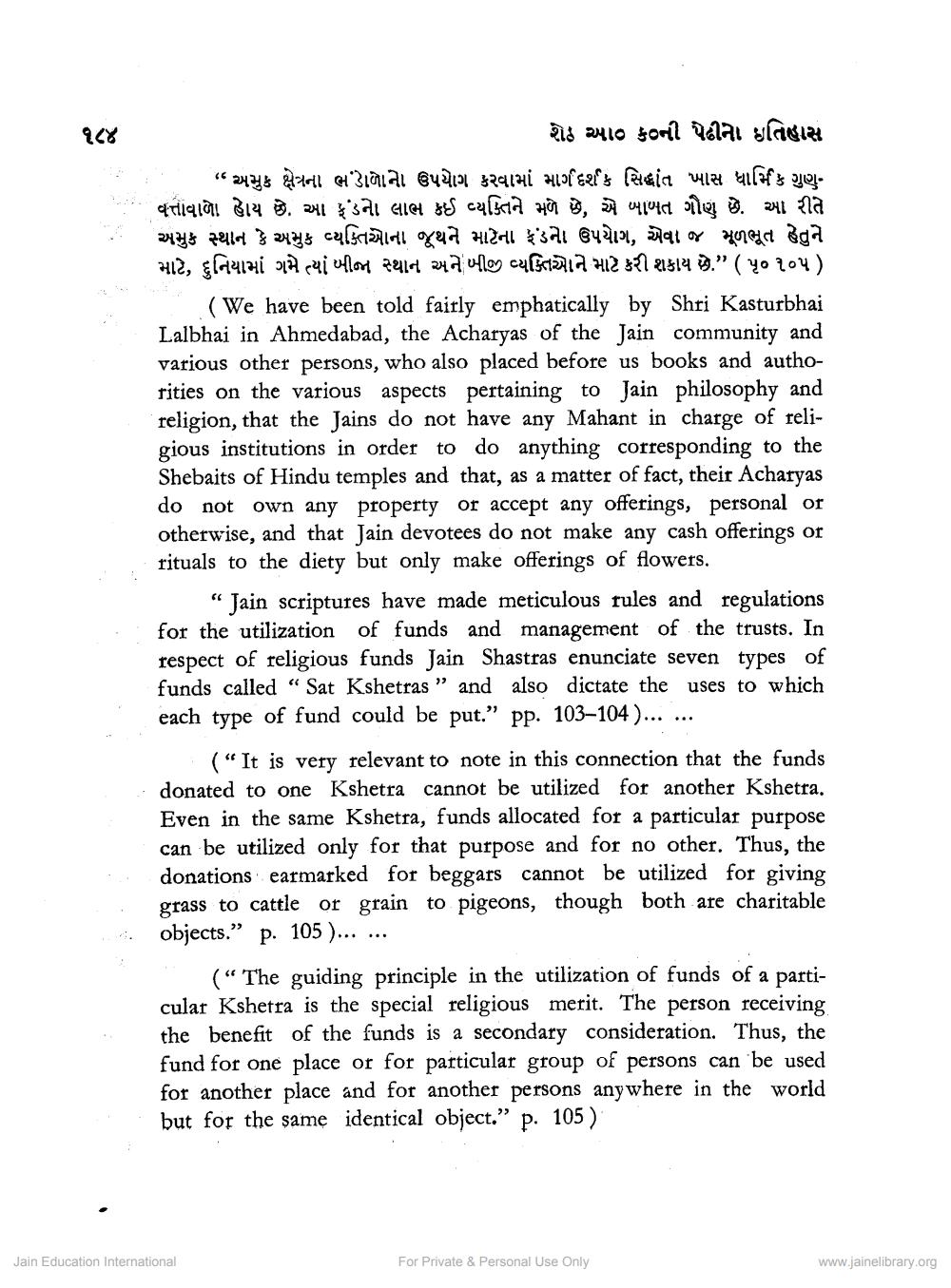________________
૧૮૪
rituals
.
શેઠ આ૦ ક0ની પેઢીને ઇતિહાસ “અમુક ક્ષેત્રના ભંડોળને ઉપયોગ કરવામાં માર્ગદર્શક સિદ્ધાંત ખાસ ધાર્મિક ગુણવત્તાવાળે હેાય છે. આ ફંડને લાભ કઈ વ્યક્તિને મળે છે, એ બાબત ગૌણ છે. આ રીતે અમુક સ્થાન કે અમુક વ્યક્તિઓના જૂથને માટેના ફંડને ઉપયોગ, એવા જ મૂળભૂત હેતુને માટે, દુનિયામાં ગમે ત્યાં બીજા સ્થાન અને બીજી વ્યક્તિઓને માટે કરી શકાય છે.” (પૃ૦ ૧૦૫)
(We have been told fairly emphatically by Shri Kasturbhai Lalbhai in Ahmedabad, the Acharyas of the Jain community and various other persons, who also placed before us books and authorities on the various aspects pertaining to Jain philosophy and religion, that the Jains do not have any Mahant in charge of religious institutions in order to do anything corresponding to the Shebaits of Hindu temples and that, as a matter of fact, their Acharyas do not own any property or accept any offerings, personal or otherwise, and that Jain devotees do not make any cash offerings or rituals to the diety but only make offerings of flowers.
"Jain scriptures have made meticulous rules and regulations for the utilization of funds and management of the trusts. In respect of religious funds Jain Shastras enunciate seven types of funds called “Sat Kshetras " and also dictate the uses to which each type of fund could be put.” pp. 103–104)... ...
(“It is very relevant to note in this connection that the funds . donated to one Kshetra cannot be utilized for another Kshetra.
Even in the same Kshetra, funds allocated for a particular purpose can be utilized only for that purpose and for no other. Thus, the donations earmarked for beggars cannot be utilized for giving grass to cattle or grain to pigeons, though both are charitable objects.” p. 105 )......
(“The guiding principle in the utilization of funds of a particular Kshetra is the special religious merit. The person receiving the benefit of the funds is a secondary consideration. Thus, the fund for one place or for particular group of persons can be used for another place and for another persons anywhere in the world but for the same identical object.” p. 105)
Jain Education International
For Private & Personal Use Only
www.jainelibrary.org




